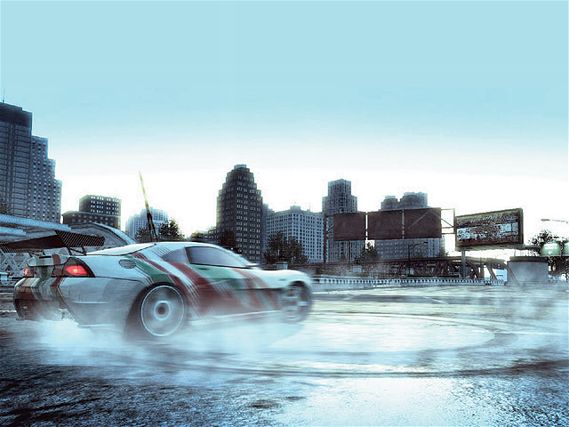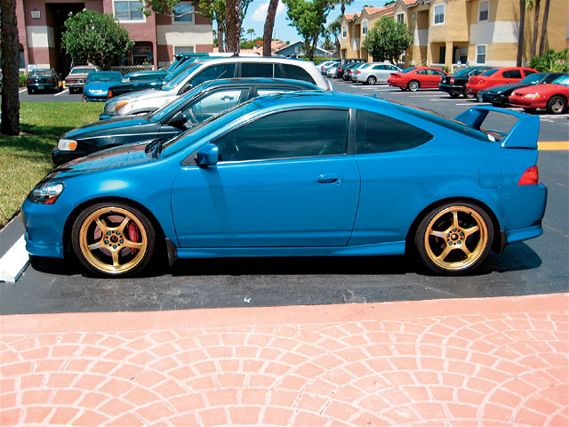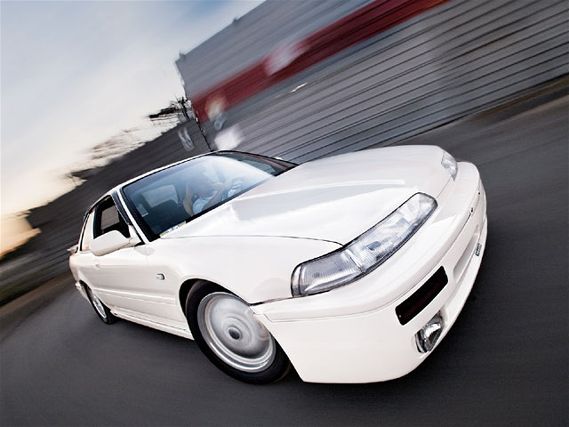 | Tech Support - April 2008
| Tech Support - April 2008
How much Honda madness can this issue take? Trust us, it's gonna take every bit that we can shove in. We couldn't complete this month without answering a little bit of Honda tech, which works out perfectly for you because tuning and building any of Honda's engines really hasn't changed much over the past decade (the K-series being one big exception). Here are some questions we see regularly in our tech inbox from Honda enthusiasts over the years and are bound to inevitably see more of in the days to come.
Get at us by: [email protected] or Super Street, c/o Tech Support, 6420 Wilshire Blvd., Los Angeles, CA 90048.
Q. I have a '07 Civic Si sedan and I want to buy the GReddy T517Z turbo kit. I can install it myself but I don't know anyone around here that I can trust with the tuning. My question is about the e-Manage Ultimate it comes with. I heard that it doesn't do the turbo kit justice because of a book I read where some guy tested all kinds of parts on a K20A2 with just the regular e-Manage and it only spun 224 horsepower on the dyno. But with the Hondata K-Pro, which I can't use because of the retarded drive-bah-wire (a little Boston for ya) it spun 254 horsepower with almost 200 lb/ft. Will the e-Manage Ultimate get me anywhere near those numbers? Is it difficult to tune? And does it come with upgradeable maps so if I wanted to up the boost or install cams I could tune it myself? If not, what standalone system will run with the drive-by wire? No one can answer this question for me. I don't want to spend four grand and be disappointed. Also, is anyone gonna make an exhaust for the four-door Si or what? Any info you guys could share would make me all warm and fuzzy inside.
Mike
Lynnfield, MA
A. The performance market is trying hard to keep up with the latest technology being used in today's cars. Unfortunately, those who recently purchased '07-'08 models will sometimes have to wait patiently for the aftermarket to play catch-up. Although GReddy has added some nice features to the e-Manage Ultimate, it's still a piggyback unit. This can be both a good and bad thing. On the downside, a piggyback has to work within the parameters that the stock computer will allow. As piggybacks rely on "fooling" the ECU into doing what we want, this type of system can be limited when pushing an engine to its maximum potential. On the upside, piggybacks allow us to tweak some high-tech computers, which normally don't do well on a traditional aftermarket standalone computer, due to sophisticated valve timing/lift controls, throttle by wire and CAN-bus communication systems. For now, the e-Manage is about as good as it gets. If you can wait a little longer, better solutions should appear. To answer your question, it is possible to get into the 250 hp range with this setup. The e-Manage is easy to use, but you had better know something about tuning before playing with the maps. This goes for tuning any forced induction car. As for a stand alone, expect a longer wait for something that can offer better tune-ability while maintaining compatibility with your drive-by-wire and the various other parameters being controlled by your factory computer. Lastly, for your exhaust, DC Sports (www.dcsports.com) has you covered (part #SCS7035).
Q. I have a '94 Honda del Sol with a boosted '96 Integra LS engine swap. I have an Integra Type R LSD laying around the garage and a car needing a LSD for traction. I was wondering if that LSD could fit into my LS hydro tranny without modification? I had heard that it couldn't be done, but I just want to make sure before I go looking for a different LSD. My brother and I have replaced differentials before in other vehicles, but we had the correct LSD for the car. My brother is a mechanic so we can do our own work. Could you please just let me know if it's possible to use the ITR diff?
Damian Gil
Nampa, ID
 | Tech Support - April 2008
| Tech Support - April 2008
A. Unfortunately, the ITR (and GS-R) ring gear bolt pattern is different from the one on your LS differential. This means you will not be able to simply bolt your LS ring gear onto your new ITR differential. Trying to use the ITR ring gear doesn't solve your problem either-it is not compatible with your LS pinion gear (different gear ratios). The only way to make this work is to use the ITR/GS-R ring and pinion gears together. The bad news is the pinion gear is part of the countershaft so you will have to put in some work. The conversion can be done if you have the correct parts, but it is not a simple bolt-on deal.
Q. I just turned 16 and got a '99 Civic EX. The D16Y8 engine in this Honda is fantastic, except for the fact that I can't find a company that sells all the parts needed for many things (at least they recommend I get the pieces all from the same company) like cam gears, retainers or a turbo. When looking around for parts I always see nice sets of all the pieces needed for B-series engines. I always hear of Hondas doing a bit of swapping with the engines. Instead of scraping some D-series parts together, should I just go for a swap to a B-series motor and tune that?Robby ReyesVia the Internet
A. The SOHC VTEC D16Y8 is one of the better versions of the D16. As you've already noticed, the aftermarket support for it is decent, but limited when compared to the B series engine. Don't worry so much about getting parts from the same company. What matters is finding quality parts that work together to build power. For someone who has just turned 16, funds are usually a large factor in deciding what route to take. Another consideration is how much wrenching experience you might have. Building a naturally aspirated D16 will improve performance. This is a great place to start if you don't have much experience working on cars. Bolting on an intake, exhaust, headers and cams are where most of us learned how to do things. Skipping this step and moving on to swaps and turbos is what gets a lot of the DIY crowd into trouble. It's important to do your time and learn the basics. Companies like Skunk2 (www.skunk2.com), Crower (www.crower.com), Bisimoto (www.bisimoto.com), and AEM (www.aempower.com) have a decent amount of bolt-on parts for your engine. Check out d-series.org for a wealth of information on these engines. If you're ready to go past the bolt-ons, boosting the D16 should be considered. Start saving your lunch money cause this mod will cost you some cash up front. Edelbrock and GReddy both have turbo kits for your car. You could even venture out and put your own turbo system together. Bang for your buck, turbocharging the stock D16 will probably be the best way to get to about 200 WHP. If you need more, either build the bottom end or consider swapping to a B18 and adding boost.
Q. I want to build a D16Z6 with either P29 (D16A1) or PM7 (ZC) pistons so I can bring the engine's compression to about 12.03:1. I was hoping to be able to run a Skunk2 stage one cam, but I'm not sure that there will be enough valve clearance. Am I going to have enough clearance? If not, what about using the head gasket from a D16A6, which would give me about 11.66:1 compression; would that work? If not, how low would I need to go? I plan to run a clay test either way, but it would make it much easier if I knew if something was going to work for sure before buying the parts. And one more question: If I was to run the cam but only with a lower compression ratio, what kind of difference is that going to make because of the lower compression versus a stock cam and 12:1?Wes WitbyVia the Internet
 | Tech Support - April 2008
| Tech Support - April 2008
A. The D16Z6 with P29/PM7 piston combination has been done successfully (with various camshafts). As we've never tried this exact build ourselves and don't know details, we asked the experts at Skunk2. Their stoic answer was, "It is up to the engine builder to check for proper clearance during the build." We agree with this statement, as there are too many variables involved with engine building to simply answer with a "yes" or "no." Things like cam timing adjustment, piston to deck height measurements, milling of the head or valve train modifications can all affect clearance. The clay test has to be done to ensure proper clearance between the pistons and valves. At some point, you just have to try it and make adjustments as needed (head gasket thickness or modifying the pistons). On your last question (11.66:1 w/cam vs. 12:1 on stock cam), you would need to run both set-ups on a dyno to get your answer. Building power goes beyond raising compression and adding a cam. Variables such as head flow characteristics, cam profile, intake design, header/exhaust design, fuel mixture, octane rating, and ignition timing all have to be synchronized together. Given a proper tune, our money would be on the 11.66:1 with a Skunk2 cam.
